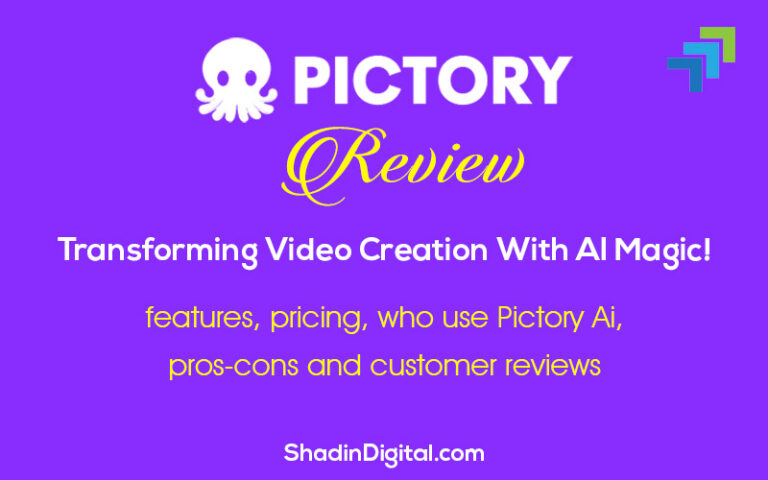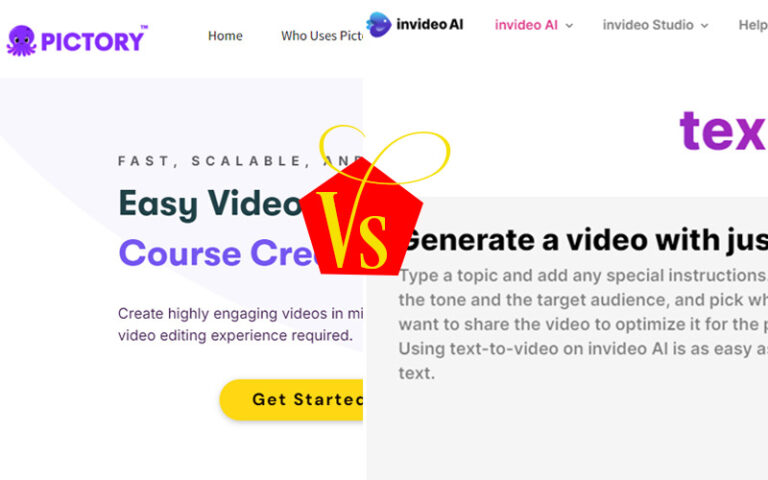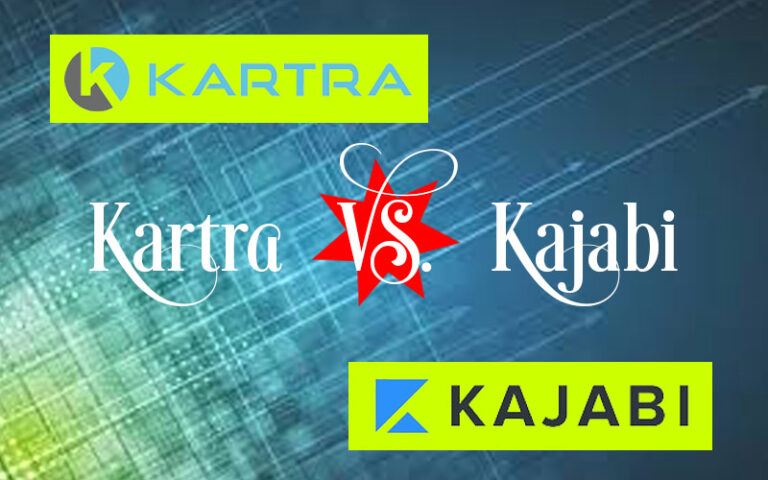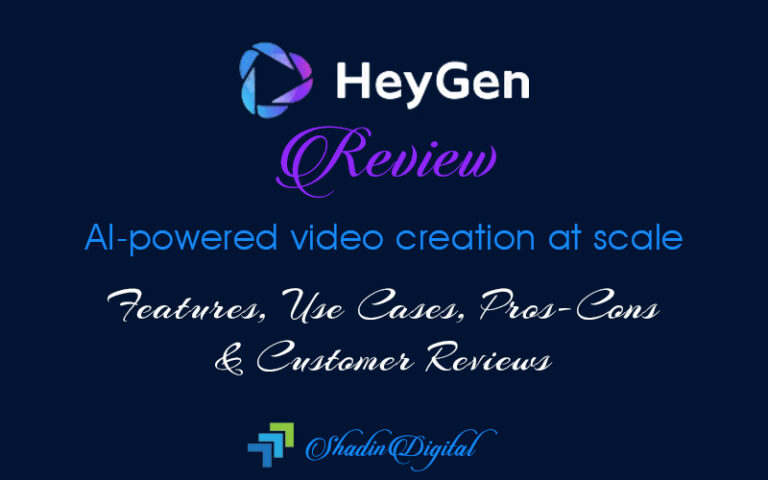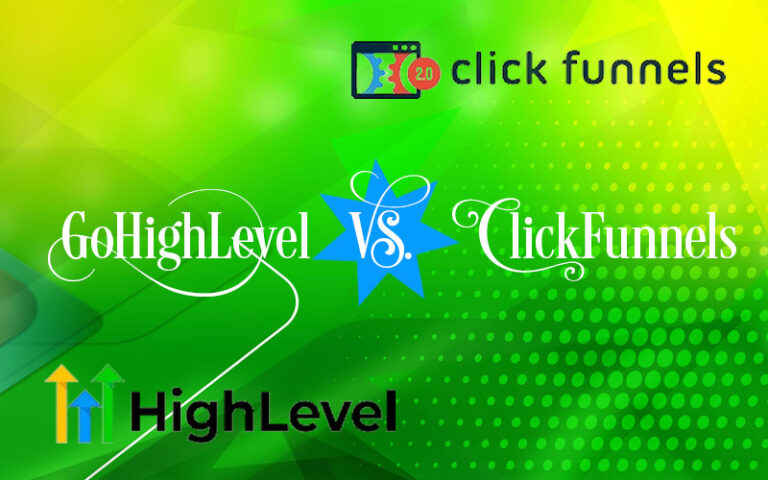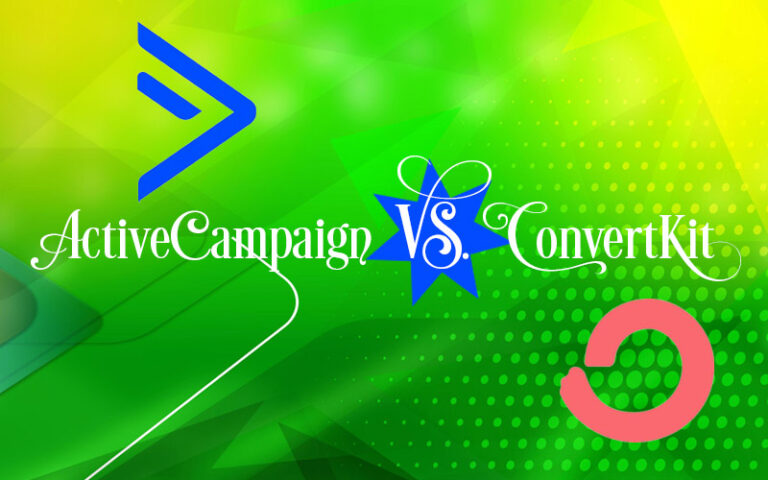HeyGen Vs. Synthesia – AI Video Creation Tools Compared!
In today’s digital world, video content is a vital tool for businesses and creators. With AI-driven platforms like HeyGen and Synthesia, making professional videos has never been easier. Both tools allow users to create engaging videos without needing actors, cameras, or expensive studios. However, there are key differences between them, which makes choosing one a thoughtful decision.
This comparison will explore the differences between HeyGen Vs Synthesia in terms of features, ease of use, pricing, customization, and more.
Pros and Cons of HeyGen Vs. Synthesia
Pros and Cons of HeyGen
Heygen Pros:
- Easy to use for beginners.
- Realistic avatars enhance videos.
- Wide range of templates available.
- Translates videos into multiple languages.
- Supports voice cloning for customization.
Heygen Cons:
- Credit system limits frequent use.
- Avatars may lack emotional depth.
- Advanced features can be expensive.
Pros and Cons of Synthesia
Synthesia Pros:
- Offers high-quality AI avatars.
- Fast video creation saves time.
- User-friendly with clear instructions.
- Integrates with multiple platforms.
- Allows customization of voice and avatars.
Synthesia Cons:
- Limited creative control over animations.
- Custom avatars come at a high cost.
- Basic features can feel restrictive for experts.
What Is HeyGen?
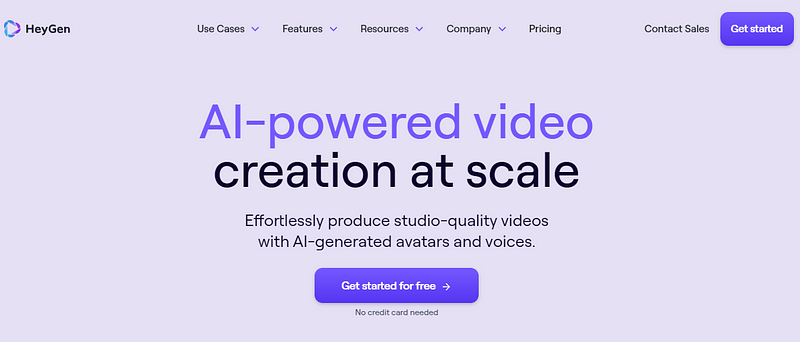
HeyGen is an AI-powered video creation platform designed to help users create videos with realistic avatars. It caters to businesses and creators looking for a versatile solution that blends professional-looking videos with a broad range of customization options. Whether for product demonstrations, marketing, training, or personal use, HeyGen’s avatars help bring ideas to life.
What Is Synthesia?
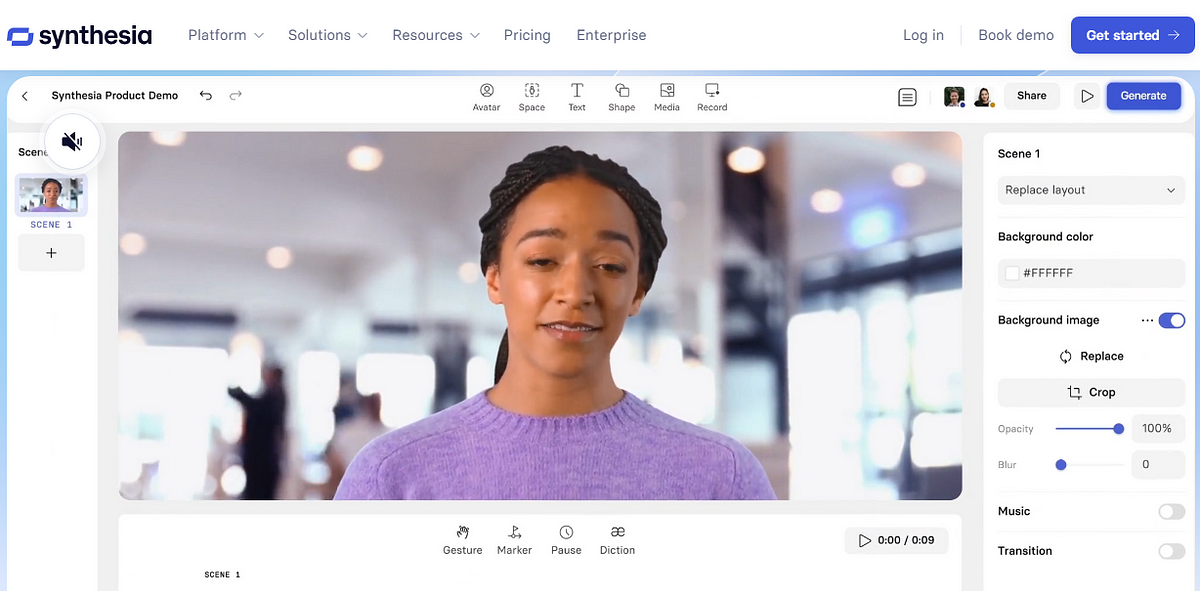
Synthesia is a well-known AI video generation platform focused on providing businesses and organizations with professional-looking AI avatars. It is popular for creating instructional, corporate, and training videos without the need for traditional video production processes.
HeyGen Vs. Synthesia: The 8 Key Differences!
1. Ease of Use: Simplified Creation
For any AI tool, ease of use is critical. HeyGen and Synthesia aim to be user-friendly, but their approaches differ slightly.
HeyGen is designed with beginners and experienced creators in mind. It provides a smooth and easy-to-navigate interface. Users can select an avatar, add a script, and customize their video in a few simple steps. The intuitive drag-and-drop features ensure that users don’t need technical knowledge to create professional-looking videos.
Synthesia is more focused on corporate users. The interface is also simple, but it can be a bit restrictive for those who want more creative freedom. Synthesia’s step-by-step guidance is helpful for first-time users, but seasoned creators might find its customization options limited compared to HeyGen.
Key Difference: HeyGen offers more creative flexibility, whereas Synthesia is simplified for more standardized corporate video creation.
2. Avatar Customization and Variety
HeyGen and Synthesia use AI avatars, but the options and customizability of these avatars are a crucial difference between the platforms.
HeyGen stands out for offering a wider variety of avatars with extensive customization. It allows users to change the appearance of avatars to better align with branding needs. HeyGen also supports more diverse avatars, including animated avatars and lifelike human representations, which can appeal to different audiences. Users can even use the Photo Avatar feature to create avatars from a photo, making it possible to create highly personalized videos.
Synthesia focuses on providing polished, professional avatars that fit corporate environments. The avatars look realistic and are perfect for formal presentations, training modules, and tutorials. However, compared to HeyGen, Synthesia offers fewer customization options. You are limited to the avatars available, which are mostly designed for business use. While this ensures quality, it limits creative freedom.
Key Difference: HeyGen offers more diverse avatars and deeper customization, making it ideal for creators looking for a unique touch, while Synthesia sticks to professional, business-oriented avatars.
3. Text-to-Speech and Voice Quality
Both platforms rely heavily on AI-driven text-to-speech (TTS) engines, but there’s a noticeable difference in voice quality and customization.
HeyGen offers a wider selection of AI voices, including multilingual support. The voices are natural-sounding, and users can tweak the pitch, tone, and pace to match the message’s tone. Additionally, HeyGen’s Voice Cloning feature allows users to clone their voice and use it in videos, which adds a personal touch to their creations.
Synthesia also provides high-quality TTS, with voices that sound polished and professional. However, it is more focused on corporate needs, meaning the voices are typically formal and businesslike. While Synthesia offers multilingual support, the customization options are limited compared to HeyGen.
Key Difference: HeyGen’s voice options are more flexible and customizable, while Synthesia’s TTS is professional but limited in personalization.
4. Features and Functionalities
When it comes to features, HeyGen and Synthesia have overlapping functionalities, but HeyGen offers additional tools that appeal to a broader range of creators.
HeyGen Features:

HeyGen offers a range of powerful features designed to enhance video creation and customization. Here’s a look at what makes HeyGen stand out:
- Instant Avatar: With Instant Avatar, users can create personalized avatars quickly. This feature allows for the immediate generation of a digital representation of oneself, perfect for a range of uses from social media to professional profiles.
- Studio Avatar: The Studio Avatar option provides a more polished and professional avatar. It is ideal for creating high-quality, detailed avatars that look great in any setting.
- Video Translate: This feature enables users to translate videos into different languages. It makes content accessible to a broader audience, breaking down language barriers efficiently.
- Voice Cloning: HeyGen’s Voice Cloning allows users to replicate specific voices. This can be used for creating voiceovers or adding a personal touch to videos, making content more engaging and relatable.
- Photo Avatar: Users can turn their photos into avatars with this feature. It offers a quick way to create avatars based on actual images, maintaining a personal connection in digital interactions.
- AI Voices: The AI Voices feature provides a range of synthetic voices for various needs. Whether for video narration or interactive applications, these voices sound natural and realistic.
- Personalized Video: Personalized Video allows for the customization of video content to suit individual preferences or specific audiences. This makes videos more relevant and engaging.
- Streaming Avatar: The Streaming Avatar feature is designed for live streaming. It enables users to maintain an animated avatar presence during live broadcasts, adding a dynamic element to their streams.
- AI Avatars: AI Avatars are versatile and customizable. They can be adjusted to fit various styles and contexts, offering flexibility for different types of content.
- Templates: HeyGen provides a variety of templates. These templates simplify the video creation process by offering pre-designed layouts and formats that users can customize.
- Zapier Integration: The Zapier Integration feature connects HeyGen with other apps and services. This allows for automation and seamless workflows, improving efficiency in content creation and management.
Synthesia Features:
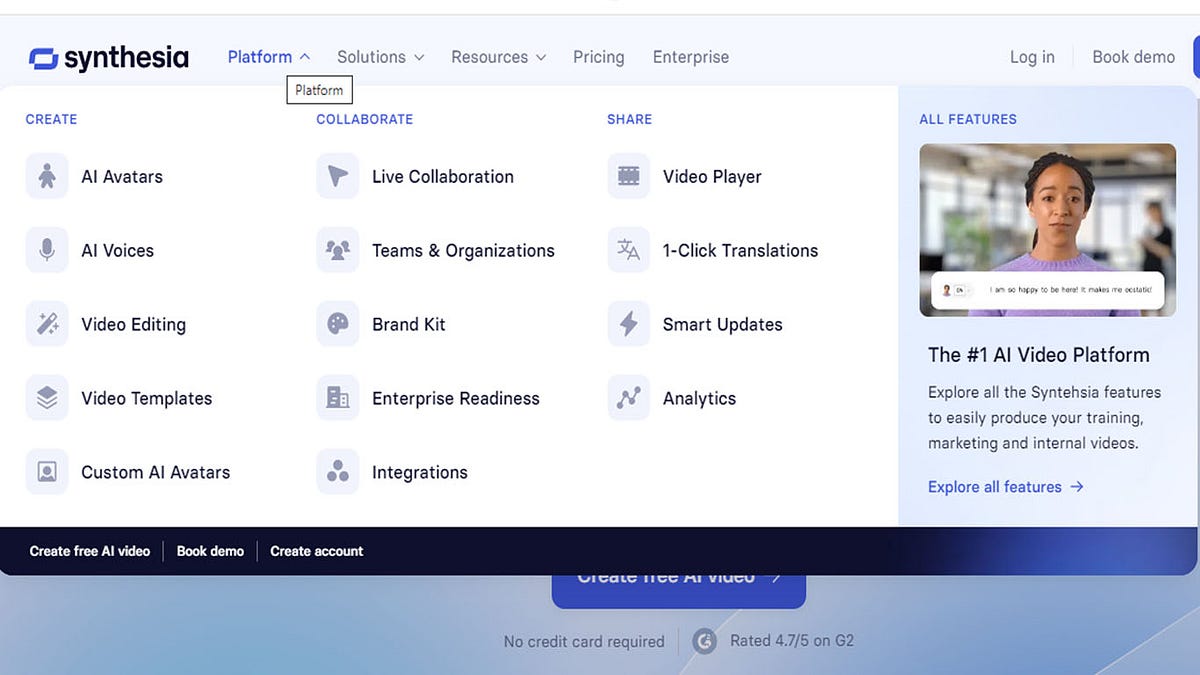
Synthesia offers a range of features designed to make video creation easier and more accessible. Here’s an overview of what it provides:
230+ Video Avatars
Synthesia boasts over 230 video avatars. These avatars represent different people and can speak in various languages. They help personalize videos and make them more engaging.
140+ Languages
The platform supports over 140 languages. This wide range allows users to create videos in different languages, making it easier to reach global audiences.
60+ Video Templates
With more than 60 video templates, Synthesia simplifies the video creation process. These templates cover various styles and purposes, helping users start their projects quickly.
Custom Avatars
Users can create custom avatars. This feature allows for a personalized touch, making videos more unique and tailored to specific needs.
Free AI Video Generator
Synthesia includes a free AI video generator. This tool helps users generate videos without needing advanced skills or expensive software.
AI Video Editor
The platform also offers an AI video editor. This editor simplifies the editing process, making it easier to cut, adjust, and refine videos.
AI Voice Generator
The AI voice generator produces natural-sounding voiceovers. It supports various accents and tones, adding a professional touch to videos.
Text to Video
Synthesia can convert text into video content. This feature is useful for creating informative and engaging videos from written content.
Script to Video
Users can turn scripts into videos with Synthesia. This functionality streamlines the video creation process, turning written scripts into visual content efficiently.
Synthesia Tools
The platform provides various tools to enhance video creation. These tools are designed to make the process smoother and more efficient.
AI Script Generator
Synthesia’s AI script generator helps create video scripts quickly. It generates content based on user input, aiding in the scriptwriting process.
Video Translator
The video translator feature allows users to translate video content into different languages. This tool is invaluable for reaching international audiences and ensuring content is accessible to everyone.
Key Difference: HeyGen’s feature set is broader and more versatile, while Synthesia’s is streamlined for corporate video production.
5. Pricing Models
For businesses and creators, pricing is an important consideration when selecting a video creation tool. Synthesia and HeyGen differ in their pricing strategies.
HeyGen Pricing:
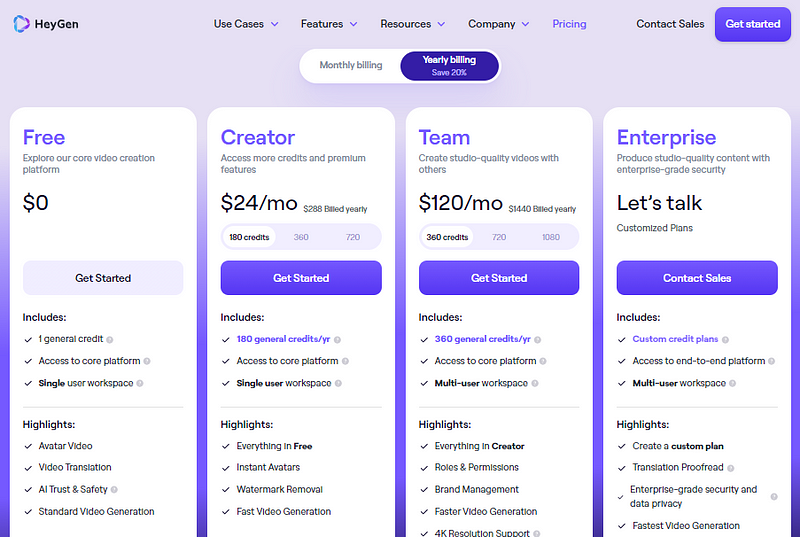
HeyGen offers flexible pricing with a credit-based system, allowing users to purchase credits based on their video production needs. This system can be appealing to users who only need to create videos occasionally. However, for heavy users, the cost may add up over time. Despite this, the variety of features and flexibility makes HeyGen’s pricing model attractive for creators who need more control over how they spend their credits.
Synthesia Pricing:
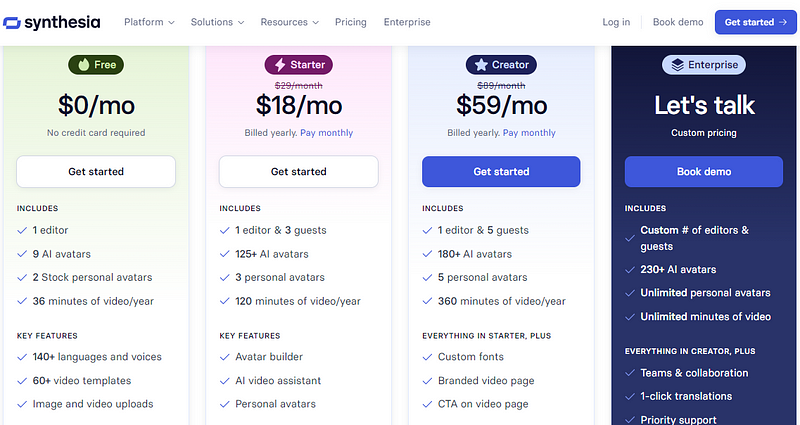
Synthesia operates on a subscription model, where users pay a flat fee for a set number of videos per month. This subscription approach is ideal for businesses that need to produce a consistent volume of content. Synthesia’s pricing tends to be more predictable but can be more expensive for small businesses or occasional users.
Key Difference: HeyGen’s credit-based system provides flexibility for occasional users, while Synthesia’s subscription model is more suited for businesses with ongoing video production needs.
6. Customization and Branding
For businesses, maintaining brand consistency across video content is essential. Both platforms offer some branding options, but HeyGen takes it a step further.
HeyGen allows users to customize almost every element of their videos, from the avatars’ appearance to the background and video format. This is especially useful for creators or businesses looking to tailor videos to their specific audience. The templates available in HeyGen also offer a wide range of options, making it easy to create videos that are visually unique.
Synthesia offers fewer customization options. Users can add logos and adjust the background to align with their brand, but the platform is more focused on keeping things simple and professional. While this ensures a polished final product, it lacks the creative flexibility found in HeyGen.
Key Difference: HeyGen offers more branding customization, making it ideal for businesses looking for tailored content, while Synthesia focuses on polished, standardized output.
7. Integrations and Compatibility
Integrations can enhance workflow by connecting your video creation platform to other tools you already use. Here’s how HeyGen and Synthesia stack up in this area.
HeyGen integrates with various platforms, such as Zapier, which enables users to automate tasks and connect HeyGen with hundreds of other applications. This integration expands the platform’s functionality, making it easier to incorporate AI-generated videos into marketing campaigns, email newsletters, or CRM systems.
Synthesia is more focused on direct video creation but also supports integrations with learning management systems (LMS) and other corporate tools. This makes it a good fit for training and education purposes but offers fewer creative integrations than HeyGen.
Key Difference: HeyGen offers broader integrations for creative workflows, while Synthesia focuses on educational and corporate tool integrations.
8. Target Audience
HeyGen targets a wider audience, including creators, marketers, influencers, and businesses of all sizes. Its customizable features and diverse avatars make it a go-to solution for anyone looking to create personalized and creative content.
Synthesia is more tailored to corporate users who need professional, formal videos for internal and external communication. Its streamlined approach is designed for businesses that require efficiency and consistency in video production.
Key Difference: HeyGen appeals to a broader creative audience, while Synthesia focuses more on corporate users and formal content creation.
Here’s a video of Synthesia Vs HeyGen.
HeyGen Vs Synthesia: Which Is Better for You?
In the battle between HeyGen and Synthesia, the right choice depends on your specific needs.
HeyGen is ideal for creators looking for creative flexibility and extensive customization. It’s perfect for businesses or individuals who want to create highly personalized content, such as product videos, social media clips, or animated presentations. The ability to translate videos, clone voices, and use live avatars makes it a versatile choice.
Synthesia shines in the corporate world. Its simplified video creation process and professional avatars make it an excellent fit for businesses that need formal, polished video content. If you’re looking for a tool that can consistently produce training, onboarding, or explainer videos, Synthesia is a reliable option.
FAQs: HeyGen Vs Synthesia
Here are 7 frequently asked questions (FAQs) about AI video creation tools:
1. What is an AI video creation tool?
An AI video creation tool is a software platform that uses artificial intelligence to automatically generate videos. These tools allow users to create professional-looking videos without needing advanced technical skills, actors, or expensive equipment. By inputting text, images, or scripts, the AI can generate videos with virtual avatars, animations, or other content.
2. How do AI video creation tools work?
AI video creation tools work by using algorithms and machine learning to analyze the input provided by the user (such as text, images, or templates) and converting it into a video format. They often include features like text-to-speech (TTS), pre-designed avatars, and customizable templates, allowing users to create videos by selecting options and letting the AI handle the technical details.
3. What types of videos can I create using AI video creation tools?
With AI video creation tools, you can create a wide range of videos, including:
- Explainer videos
- Training and educational videos
- Product demonstrations
- Social media content
- Marketing videos
- Personalized customer communication
- Corporate presentations
4. Do I need video editing skills to use an AI video creation tool?
No, AI video creation tools are designed to be user-friendly and accessible for people with little to no video editing skills. Most platforms provide simple drag-and-drop interfaces, pre-built templates, and customizable avatars, making the process easy for anyone to create high-quality videos quickly.
5. Can I customize the avatars and voices in AI-generated videos?
Yes, many AI video creation tools offer customization options for avatars and voices. You can often select different avatars to match your brand, customize their appearance, and choose from a variety of voices with different languages and accents. Some tools even allow for voice cloning, enabling users to use their own voice in the videos.
6. What are the benefits of using AI video creation tools for businesses?
AI video creation tools provide businesses with several key benefits, including:
- Cost savings: No need for expensive video production teams or equipment.
- Time efficiency: Quick video generation for marketing campaigns, training, and presentations.
- Scalability: Easily create multiple videos in different languages or formats for diverse audiences.
- Consistency: Maintain a uniform style and tone across video content.
7. Are AI video creation tools suitable for large enterprises and small businesses?
Yes, AI video creation tools are suitable for large enterprises and small businesses. Large organizations use them for scalable content creation in areas like training and corporate communication, while small businesses benefit from the affordable, quick, and professional video content for marketing, customer engagement, and product promotion. The flexibility of these tools makes them valuable for businesses of all sizes.


